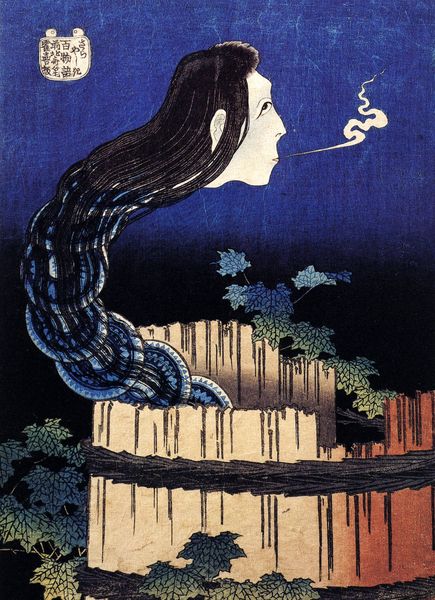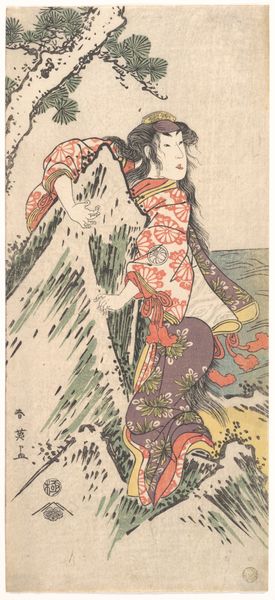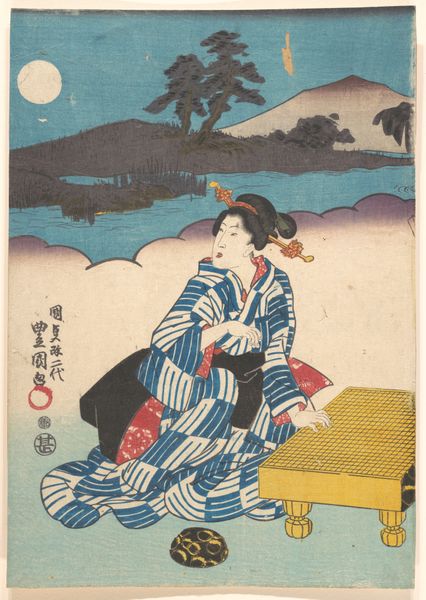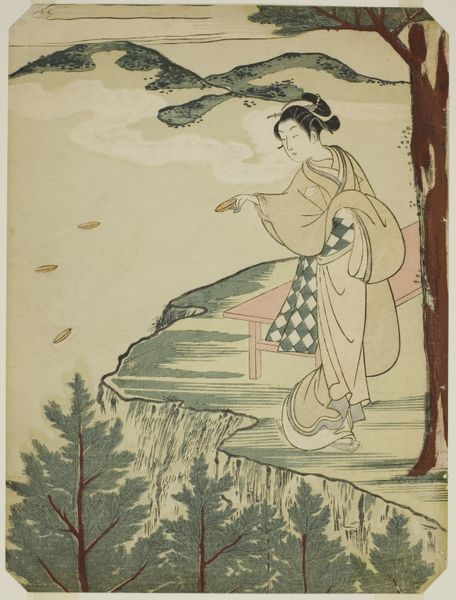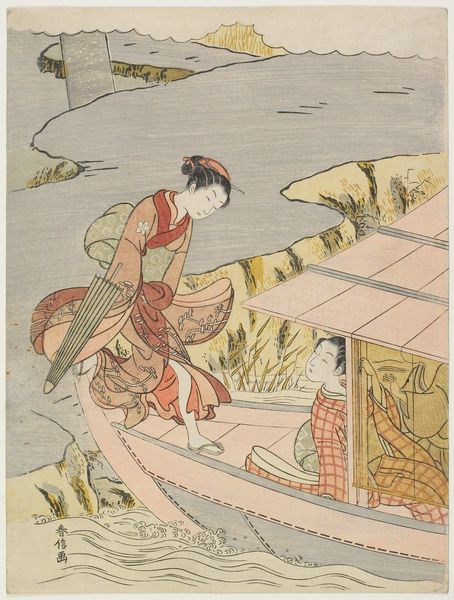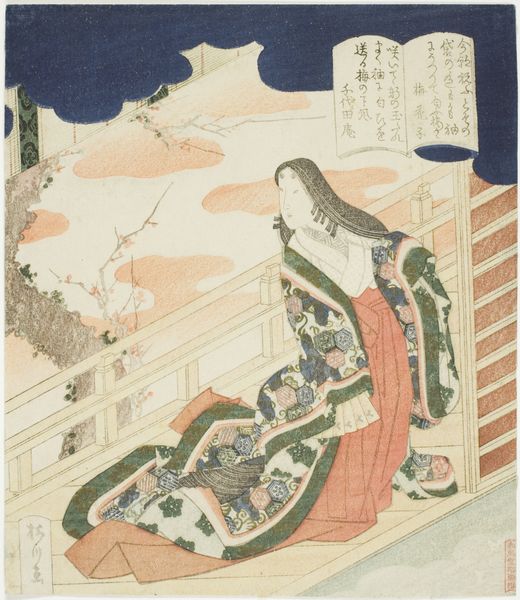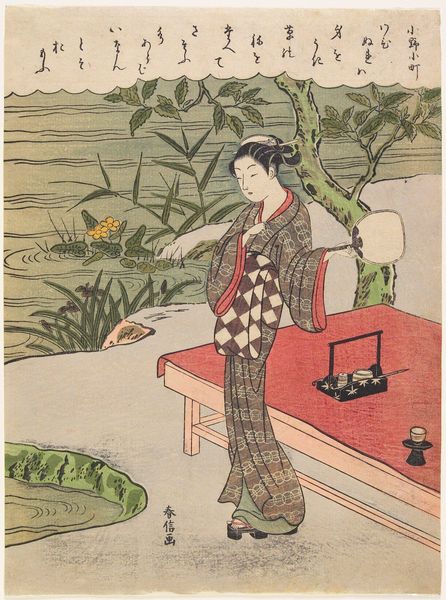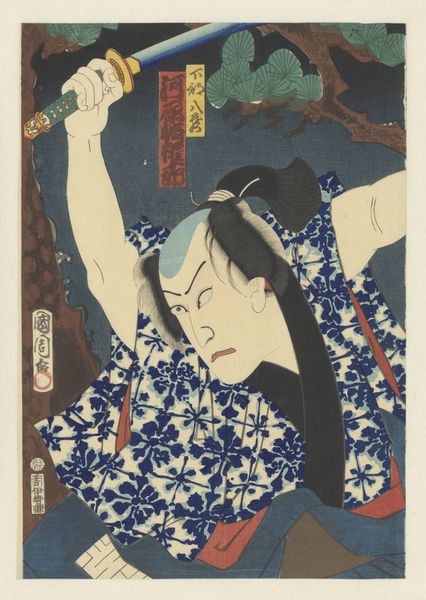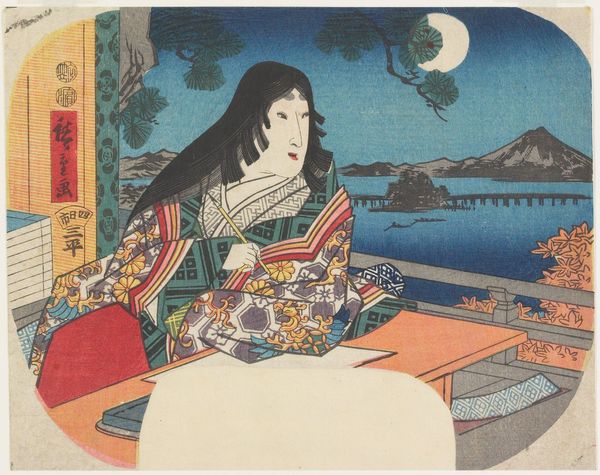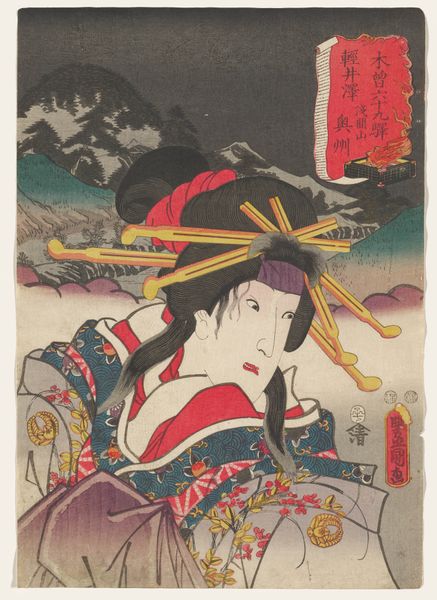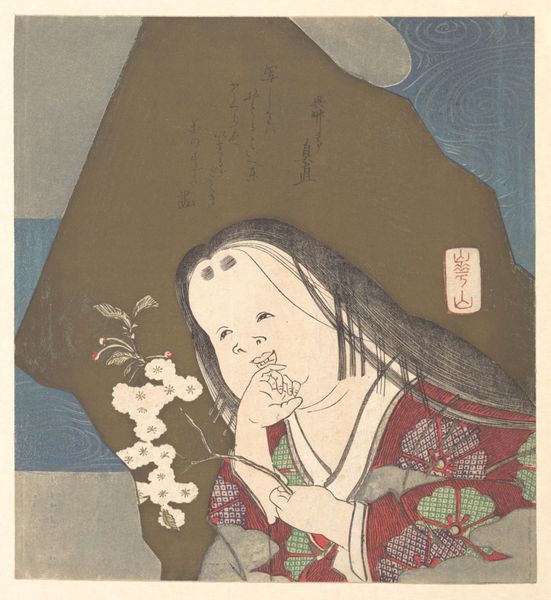
print, ink, woodcut
#
portrait
# print
#
asian-art
#
ukiyo-e
#
fantasy-art
#
ink
#
woodcut
Dimensions: 10 3/8 × 7 1/2 in. (26.4 × 19 cm) (image, sheet, vertical chūban)19 × 15 × 1 1/2 in. (48.26 × 38.1 × 3.81 cm) (outer frame)
Copyright: Public Domain
Curator: Standing before us is Katsushika Hokusai’s c. 1831-1832 woodblock print titled "The Mansion of the Plates", which the Minneapolis Institute of Art holds in its collection. Editor: Well, immediately the mood is eerie, right? The dark blues and greens contrast with the reddish tones in this looming figure… there is a tension between beauty and dread that speaks to broader issues of the subjugation of women. Curator: Indeed. Hokusai was a master of Ukiyo-e, and his ghost prints are fascinating because of the emotional and cultural weight of these kinds of spectral figures within Japanese folklore. Consider Okiku, who haunts a well. Editor: Her story’s symbolic significance resonates today: She was murdered, thrown down a well, and now she is eternally counting to avenge that crime, holding onto the traditional role she was assigned, tied to an impossible idea of duty. She literally embodies how violence creates inescapable cycles. Curator: Precisely, her spectral presence underscores anxieties about unresolved traumas and societal imbalances, specifically regarding violence and gender. It's interesting to note the motifs used in the plate design on her body resemble ocean waves. A direct reference to Hokusai’s later, more famous prints? Or maybe something else? Editor: I'm struck by that curl of vapor exiting Okiku’s mouth; it feels charged, a signifier of both her spirit’s persistence and the injustices that continue to fuel it. It's hard not to think about women's historical exploitation being channeled through this supernatural tale. The "well" is the same well women go to as part of their everyday roles in their household. Her soul is literally stuck in the mundane expectations of labor. Curator: Agreed. Hokusai expertly conveys both a sense of horror and profound sorrow. As a master printmaker he utilized the woodblock technique to elicit potent symbolic weight. The images resonate on cultural and individual psychic levels. Editor: Seeing Okiku’s legacy here really drives home how ghost stories, especially within this woodcut format, were an attempt to represent marginalized voices, perhaps in a way other traditional artforms did not, so thank you for the deep-dive! Curator: It’s a hauntingly potent representation of both traditional fears and lingering traumas. I am thankful we could explore the deeper symbols with your insight, too.
Comments
minneapolisinstituteofart over 1 year ago
⋮
The plate demon is supposed to be the ghost of Okiku who worked as a maid of a warrior's house, accidentally broke a dish that was treasured by her lord's family. Her angry lord killed her and threw her body in a well in his yard. Kiku became a ghost and haunted around the well. Many novels were written based on the story, and several different Kabuki plays were also written.
Join the conversation
Join millions of artists and users on Artera today and experience the ultimate creative platform.
